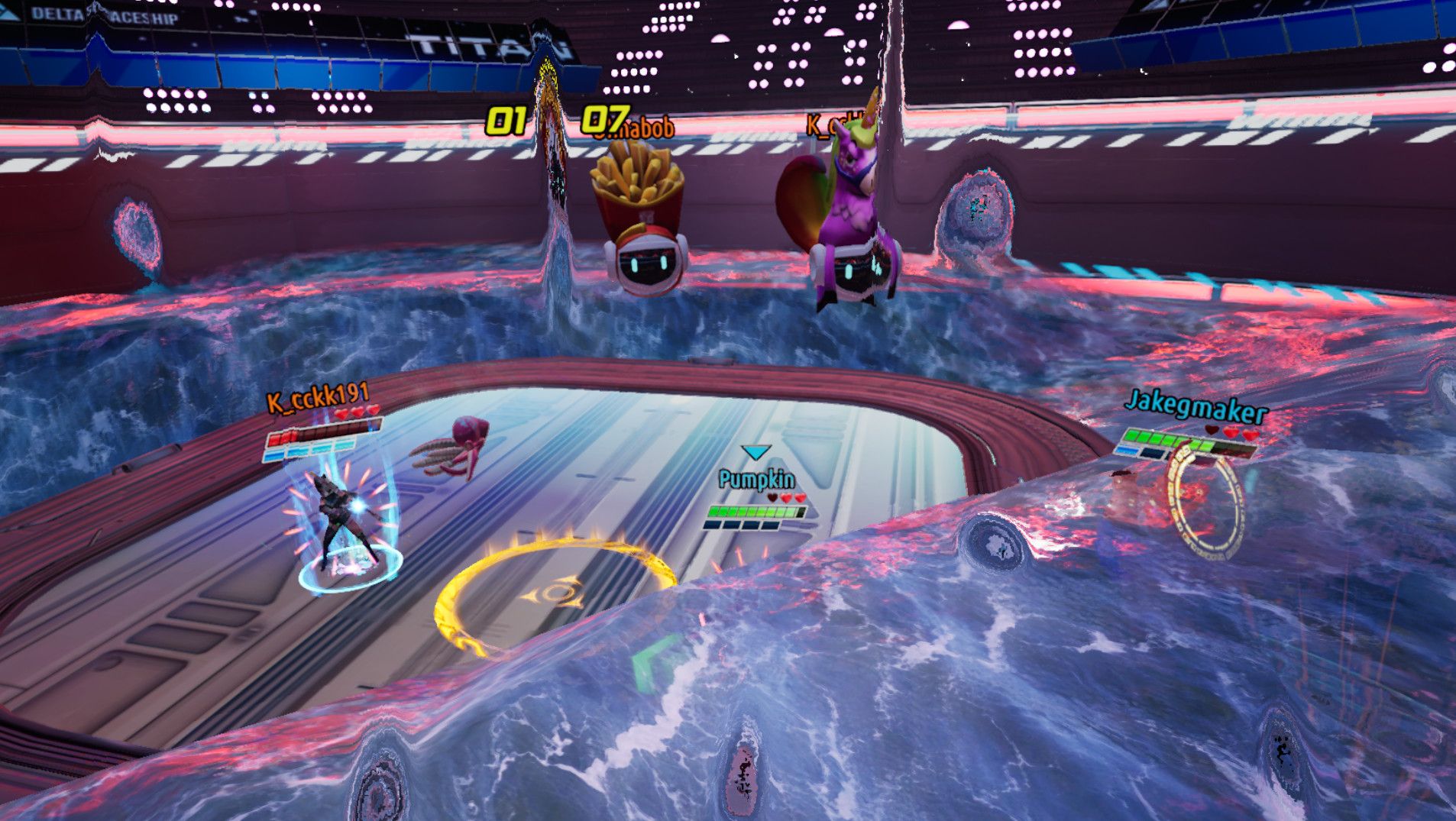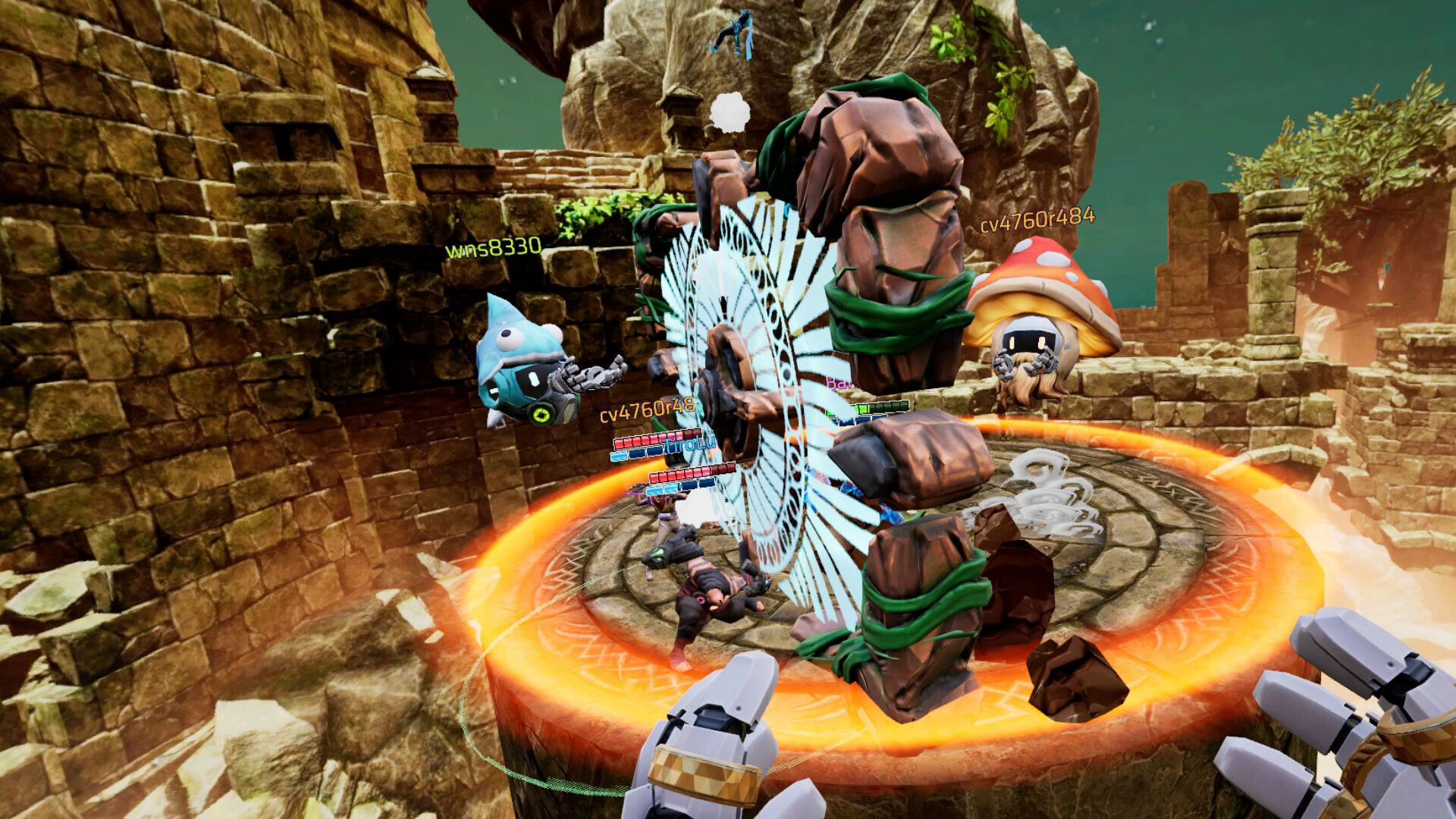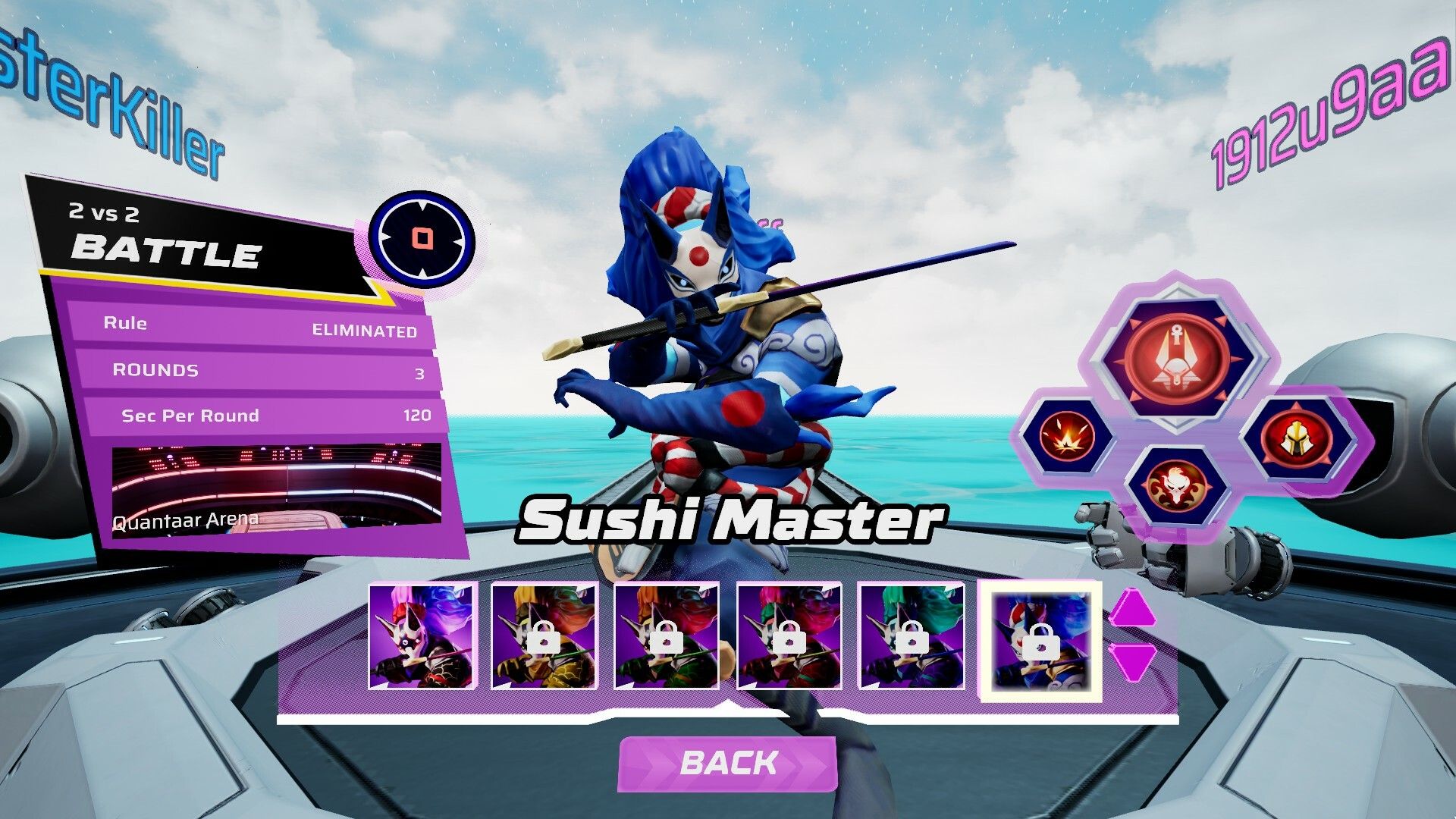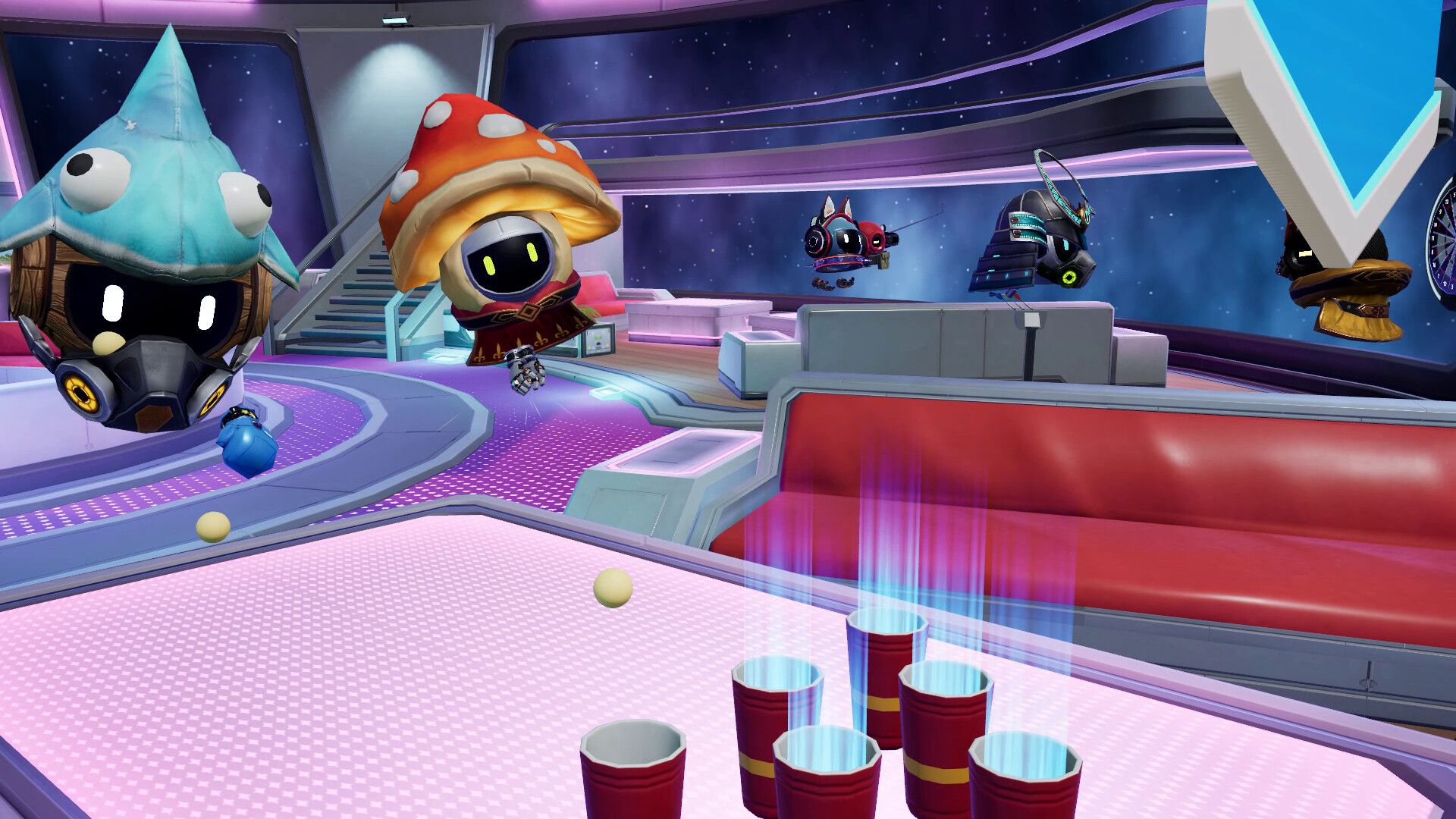Drawing from the likes of Smash Bros. and other classics, Quantaar is a new multiplayer VR brawler that bites off more than it can chew.
Launched onto App Lab for Quest earlier this month, Quantaar draws from the likes of Smash Bros., Power Stone and SoulCalibur to bring multiplayer brawler action with a competitive tinge to VR. Although that may sound like an amalgamation of some great multiplayer games, it doesn’t mean Quantaar is an instant slam-dunk.
Unfortunately, it feels less like a holistic new beginning for the genre in VR and more like a port that doesn’t significantly capitalize on the unique strengths of VR. The game’s multiplayer suite is an impressive highlight, but a good chunk of the game, including its core gameplay loop, aren’t all the way there yet – which might explain the launch on App Lab, and not the main Quest store.
Platforms: Quest via App Lab, PC VR, Pico 4 (Review conducted on Quest
Release Date: Out now
Developer: Pumpkin VR
Price: Free-to-play
The game’s premise rings clear as day for anyone familiar with platform or arena fighters; damage your opponents until their health runs out or do your best to knock them out of a ring — at least in Quantaar’s primary modes: Brawl and 2v2. There’s also a soccer mode, but I’ll get to that later.

Game Modes
Brawl is the standard free-for-all mode where anything goes, while 2v2 mode is mechanically identical aside from the team aspect, which sees players split into two teams of two. They’re both serviceable as the game’s two main modes, though there’s very little difference between them beyond featuring team-based combat in one and not the other. It’s certainly possible to strategize and work with a teammate (especially with the built-in voice chat) but matches tend to ring with a sense of hollow chaos regardless of what mode you play.
Adding to the sense of the chaos are the game’s items, which function similarly to what you could expect from items in a game like Smash: they randomly spawn in the battlefield and if your character picks it up, you get to use it to your advantage. It’s predictable fare; bombs and the like help you get the edge on your opponents. Unlike Smash Bros., however, your character doesn’t use the item. Instead, you get to throw them in – after a button press, an indicator will show where your item will land, which you can execute with a quick toss using motion controls. As far as I could tell, this is the only bespoke VR-only mechanic in the core game, compared to an otherwise standard button-based brawler control scheme.
In-game, you can switch between two viewpoints. One is from your avatar’s point of view, which is locked to the sidelines and offers a wider, bird’s-eye view of the unfolding chaos. The other camera angle is locked behind your fighter, offering a viewpoint that’s slightly more dynamic and feels more akin to a MOBA’s camera. You’re able to throw items from either viewpoint and though they can swing the tide of a battle, they tend to land with the same unsatisfying weightlessness that plagues the playable characters’ movesets.

True Combos
This is one part of a bigger issue with the entire game: developer VR Pumpkin hasn’t quite nailed the feel of Quantaar yet. Hits aren’t satisfying and there’s rarely a strong sense of space, both of which are necessary for this type of game to work. While there are combos and strings to pull off on your opponents, they don’t hit with much oomph. Instead of moves feeling stronger, characters feel a bit floaty; being on the receiving end of a beefy attack launches you across the arena like a balloon.
Dosed-out floatiness works really well in these sorts of games (just look at Mewtwo in any Smash game), but when every character feels that way it’s simply unsatisfying. That mechanic could work if movement – especially air movement – felt more precise. Unfortunately, it’s as floaty as the characters themselves.
To make the launching issue worse, every stage is effectively the same big rectangle without any geographically distinct points, housed in a similarly mirrored environment. That means if the camera suddenly stops cooperating — which does happen from time to time after your character gets launched — it can be very challenging to find your bearings in time to get back on stage.

Further contributing to the listless entropy is the game’s relative youth. There aren’t many playable characters to choose from, and most players will only have access to three when starting out. That means that matches, especially lower-ranked matches, are likely to have multiple of the same character. There also aren’t many skins and the UI isn’t very fleshed out, so it’s easy to lose track of who’s who very quickly, especially when all the characters are grouped together in one small part of the map.
A Few Extras
Besides Brawl and 2v2, Soccer is the only other mode available at the moment. Some characters feel better-suited for this additional mode than the combat-centric modes, which is an interesting touch – even if it doesn’t seem deliberate. That said, Soccer has a similar issue to the game’s primary modes; attacks just don’t feel right. Hitting the oversized ball with a powerful attack launches it just about as far as running into it does. That helps balance out some characters with good range, but it’s a missed opportunity to liven up the mode and make it really stand out in the crowd.

Multiplayer games live and die not only on their core gameplay loop, but by their multiplayer suite and support. Thankfully, that’s easily Quantaar’s greatest strength. Menus are snappy and simple and do their best to get you where you need to go quickly. The multiplayer and social lobby are well-made too. With a full in-game space for players to walk around in, it’s clearly designed to house more players than I’ve seen in it during my time with the game. Social spaces featuring fun interactive activities (such as bowling and a music venue) are fun touches that point to Pumpkin’s intentions with Quantaar. It’s exciting to see a studio put stock in the power of a well-curated social space for a game.
Quantaar Review - Final Verdict
Despite my many criticisms of Quantaar, I still enjoyed my time with the game and it’s one of the more feature-complete offerings available on App Lab. Unfortunately, even though the game’s shortcomings may be fairly small in nature, they hit where it really counts. With time and some reworking from VR Pumpkin, I could very easily see Quantaar becoming something really special, especially if the studio is able to support consistent updates in the long term.
While character and mechanical reworks are necessary, what I really hope to see in the future is an increased sense of energy and dynamism. Right now, there’s very little that makes Quantaar feel suited for VR. While Smash’s energetic camera movements and effects might not be feasible in VR, there’s an opportunity to ratchet up the immersion factor that isn’t being taken advantage of. These fights are meant to be between intergalactic gladiators, and yet there’s not even a sense that there’s a crowd watching. Even if the genre’s gameplay doesn’t innately lend itself to being in-headset, the form factor is rife with immersive potential.
Quantaar is the kind of experience I can see myself hopping into in the future, enjoying some custom matches with friends across a night or two. At the moment though, the core mechanics aren’t quite ready for primetime just yet.
UploadVR focuses on a label system for reviews, rather than a numeric score. Our reviews fall into one of four categories: Essential, Recommended, Avoid and reviews that we leave unlabeled. You can read more about our review guidelines here.


























